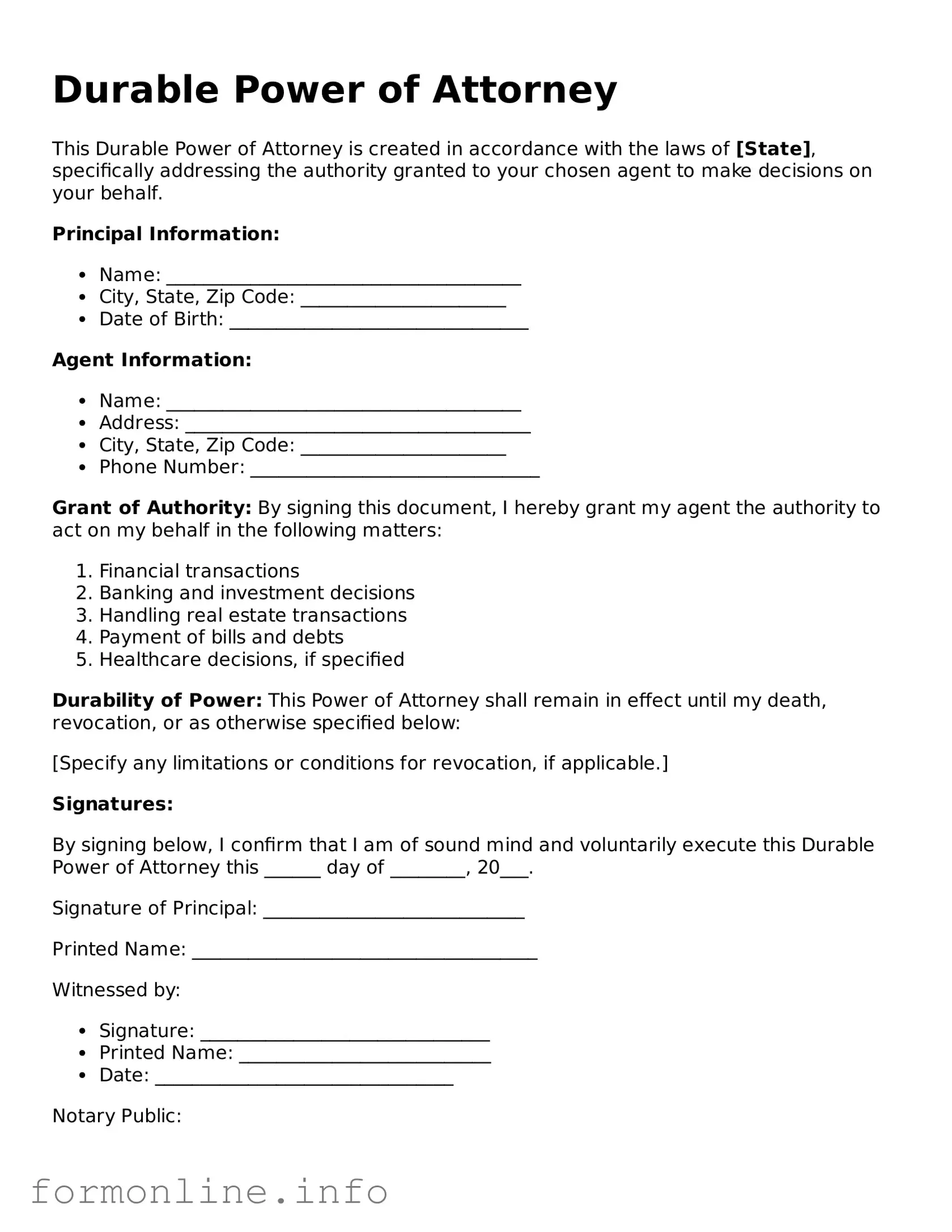Durable Power of Attorney
This Durable Power of Attorney is created in accordance with the laws of [State], specifically addressing the authority granted to your chosen agent to make decisions on your behalf.
Principal Information:
- Name: ______________________________________
- City, State, Zip Code: ______________________
- Date of Birth: ________________________________
Agent Information:
- Name: ______________________________________
- Address: _____________________________________
- City, State, Zip Code: ______________________
- Phone Number: _______________________________
Grant of Authority: By signing this document, I hereby grant my agent the authority to act on my behalf in the following matters:
- Financial transactions
- Banking and investment decisions
- Handling real estate transactions
- Payment of bills and debts
- Healthcare decisions, if specified
Durability of Power: This Power of Attorney shall remain in effect until my death, revocation, or as otherwise specified below:
[Specify any limitations or conditions for revocation, if applicable.]
Signatures:
By signing below, I confirm that I am of sound mind and voluntarily execute this Durable Power of Attorney this ______ day of ________, 20___.
Signature of Principal: ____________________________
Printed Name: _____________________________________
Witnessed by:
- Signature: _______________________________
- Printed Name: ___________________________
- Date: ________________________________
Notary Public:
State of ____________
County of ____________
On this ______ day of ________, 20___, before me appeared ________________________, known to me (or satisfactorily proven) to be the person whose name is subscribed to this instrument, and acknowledged that he/she executed the same for the purpose therein contained.
Notary Signature: ________________________
My Commission Expires: ________________
